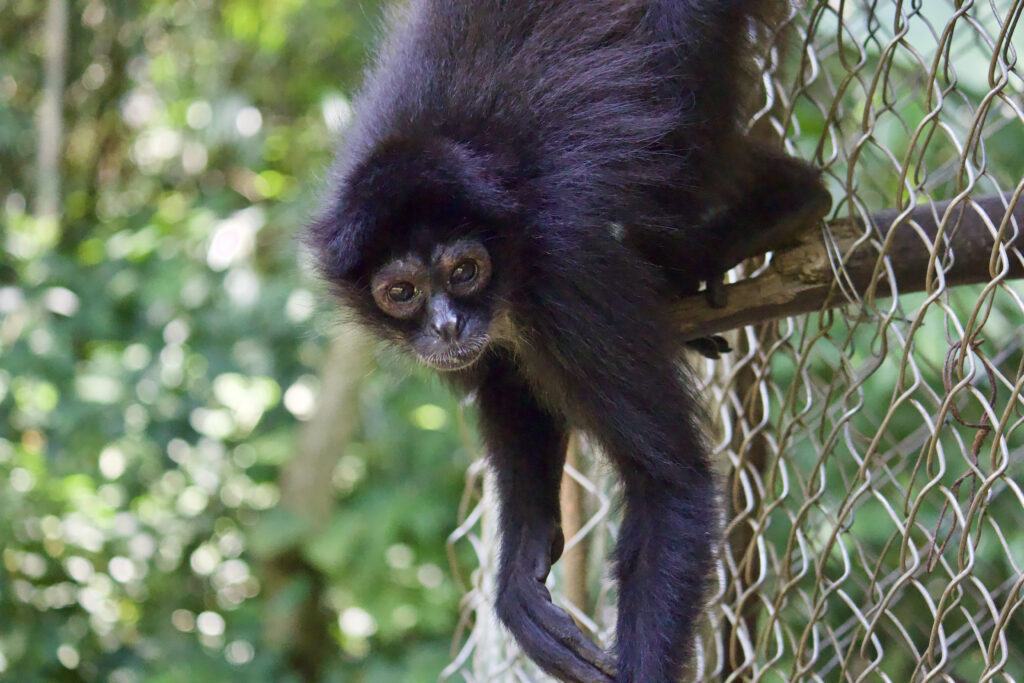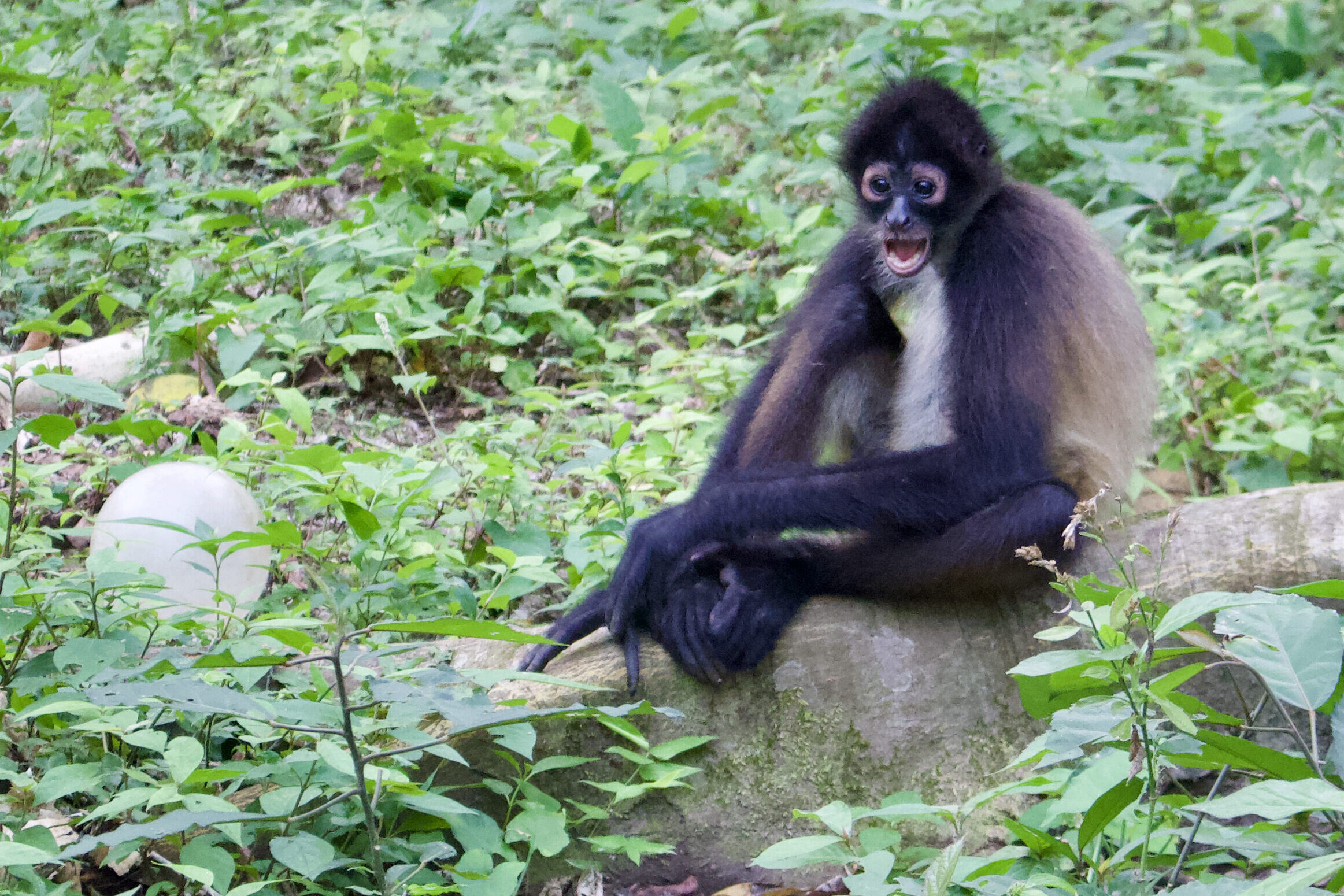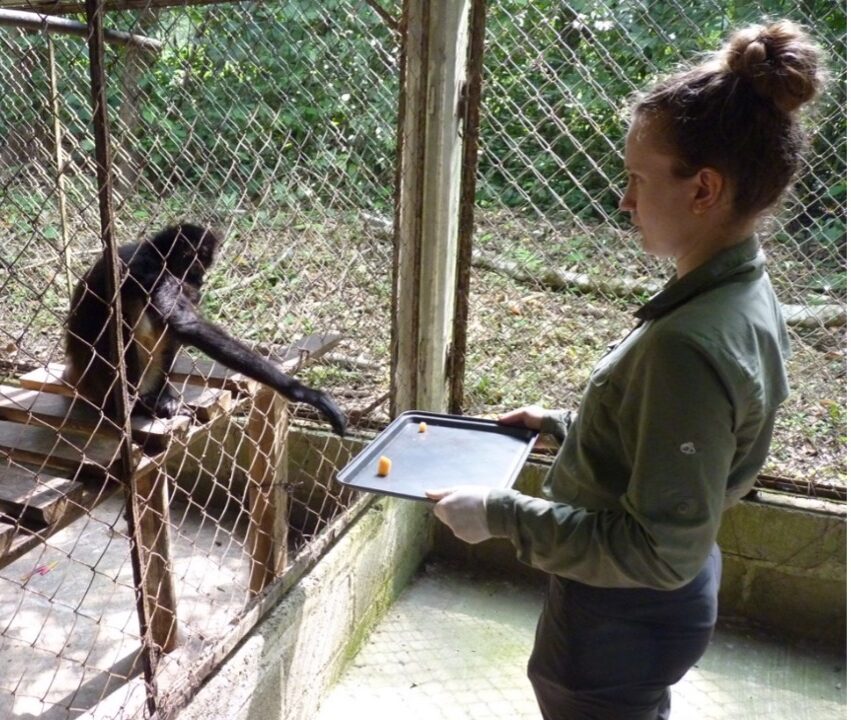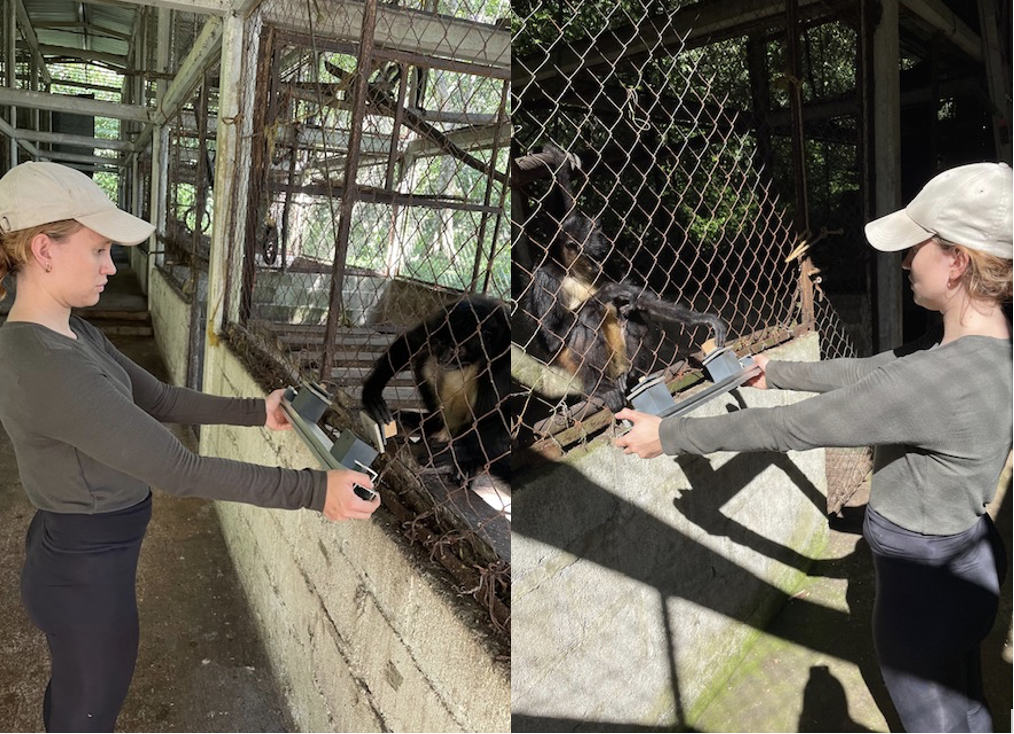Animals

This study was carried out with 10 adult black-handed spider monkeys, of which 5 males and 5 females, with ages ranging from 5 to 20 years. The captive monkeys were housed at a field station of the Universidad Veracruzana, located in a nature reserve near Catemaco, Veracruz, Mexico. The monkeys were accustomed to participating in in behavioural tests and interacting with humans, and were tested individually and temporarily separated from each other. Data collection took place between May and September of 2023.

Spontaneous preference test
Visual size discrimination of food items
A two-choice test based on spontaneous preferences was used to assess the ability of spider monkeys to visually discriminate between different sizes of a given type of food. The animals were simultaneously presented with two pieces of melon which only differed in size (=weight). In each trial, the animal was allowed to choose only one of the two food pieces. Each choice made by the spider monkeys was recorded. By systematically varying the size of the food pieces I could determine the minimum difference in size for which the spider monkeys still displayed a spontaneous preference.
I presented three different shapes: cubes, balls and hemispheres.

Weber ratios were calculated for each trial, to express the difference in volume between two food pieces presented to each monkey, and divided into ten ranges with steps of 0.10. Per Weber Ratio range, the percentage of choices for the larger food piece made by every animal and the average of the entire group were calculated.
I used one-sample Student’s t-Tests to calculate the p-values of the mean numbers of decisions for the larger food pieces for the group per Weber ratio range. I performed two-tailed Binomial tests for each individual’s choices for the larger of two simultaneously presented food pieces in order to assess whether the ratio of the choices significantly differed from chance.
Operant conditioning test
Visual size discrimination of wooden blocks
A two-choice test based on an operant conditioning procedure was used to assess the ability of spider monkeys to visually discriminate between different sizes of non-edible objects. In each session a monkey was presented with two differently-sized wooden blocks on top of two boxes, of which they were allowed to choose and open one. I assessed the spider monkeys’ abilities to learn that the box bearing the larger one of the two wooden blocks contained a food reward. Each choice for every stimulus pair was recorded. By systematically varying the wooden blocks and decreasing the size differences, I assessed the minimum difference in size that the spider monkeys were able to visually discriminate.

An animal was considered as successfully having learned that the larger wooden block of the stimulus combinations indicated the presence of the food reward in the corresponding step, once the animal reached a learning criterion of 80% correct choices on average in three consecutive sessions. The in size difference decreasing stimulus pairs were visualised by steps 1 – 4 in the results.
Weber ratios were calculated for each stimulus pair, to express the difference in volume between each stimulus combination of the wooden blocks presented to the animals. Per Weber ratio, the percentage of choices for the larger wooden block made by every animal and the average of the entire group were calculated.
I used one-sample Student’s t-tests to calculate the p-values of the mean numbers of decisions for the larger-sized wooden blocks for the group per Weber ratio. I performed a two-tailed Binomial test for each individuals’ choices for the larger wooden blocks in order to assess whether the ratio of the correct choices significantly differed from chance.